A terrarium is a collection of small plants growing in a clear, usually enclosed, container. A terrarium can be purchased; however, many household items are suitable, such as a fish bowl, aquarium, or a large bottle or vase. Select a container big enough to hold 2 or more plants (Figure 1). Containers with small openings can be used but are more difficult to plant.
Sterilizing the container may be necessary. Wash the container in hot, soapy water or a diluted bleach/water solution and rinse thoroughly.
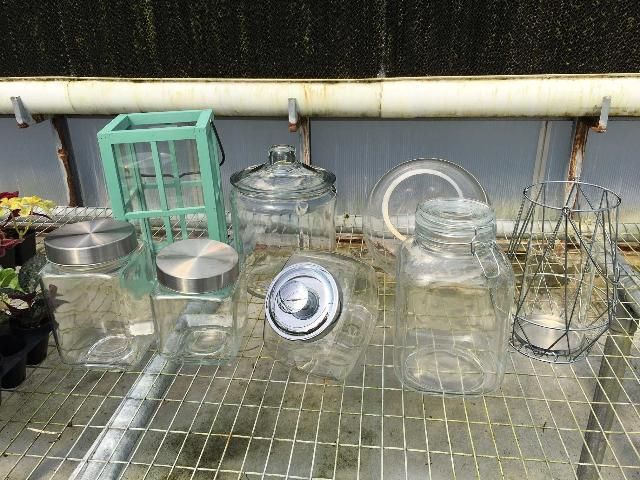
Line the bottom and about 1/5 of the side walls of the container with pea-size gravel to provide drainage for excess water (Figure 2). The size and shape of the container will determine the amount of gravel that should be used. A 1/2-inch (1.3-cm) layer is about the minimum and 1 1/2 inches (3.8 cm) should be enough for large containers. Next, place a 1/2-inch layer of horticultural charcoal above the pebbles to prevent the terrarium from developing a sour smell. Horticultural charcoal can be found at many locations, such as a nearby home and garden store. Place a piece of synthetic fabric over the drainage layer to prevent soil from settling into it and destroying its ability to drain. Materials, such as a window screen, weed cloth, nylon hosiery, or discarded sheer curtains are good choices. They are porous enough to allow water to pass through yet fine enough to hold soil particles, and they will not decompose rapidly.
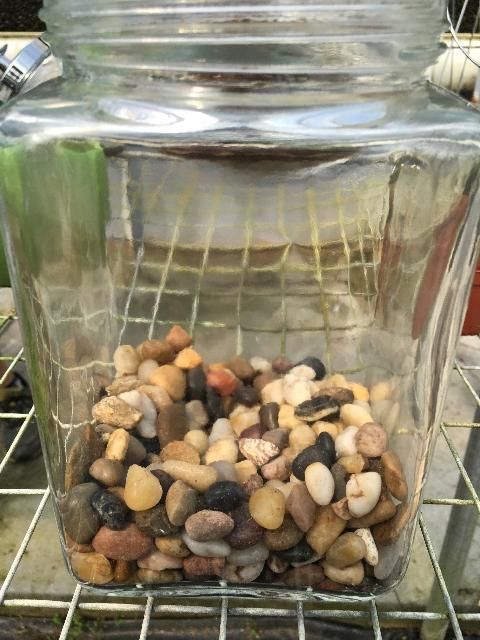
Credit: Amy Vu, UF/IFAS
Next, add enough sterilized potting soil to fill approximately 1/5 of the container. Try to keep the soil off the inside walls of the container (Figure 3).
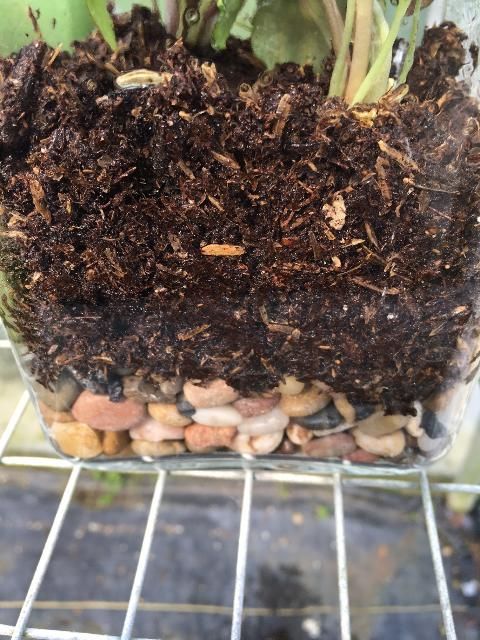
Credit: Credit: Amy Vu, UF/IFAS
The soil can be leveled or molded into contours and valleys with a spoon or any other blunt instrument.
After the soil has been prepared in the container, plants can be selected, arranged, and planted (Figure 4). Most garden centers sell foliage plants in 2- to 4-inch pots. Choose the smallest available and make sure they have similar light and moisture requirements. It may be helpful to work out the arrangement of the plants before planting them in your terrarium.
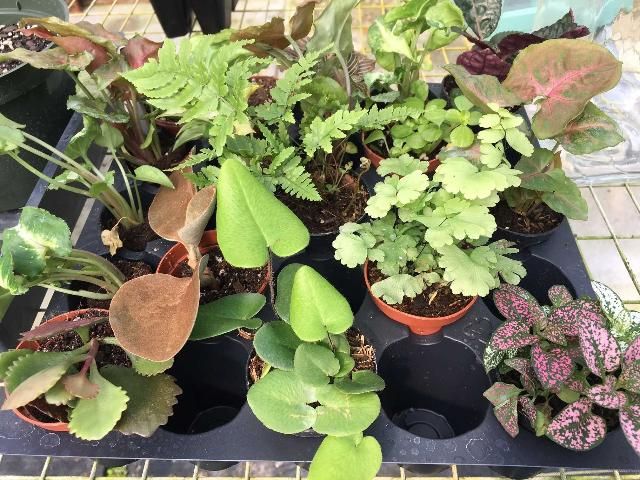
Credit: Credit: Amy Vu, UF/IFAS
If the terrarium is to be viewed from all sides, the largest plant should be planted near the center (Figure 5). If the terrarium is to be seen only from 2 or 3 sides, the tallest plant should be placed in the background. Place accessories such as stones, figurines, sand, and driftwood in the desired location(s) in the terrarium (Figure 6). Use a dry, soft paintbrush to gently sweep off any soil clinging to the sides of the container. Water plants sparingly since excess water will saturate the soil and kill the plant roots (Figure 7).
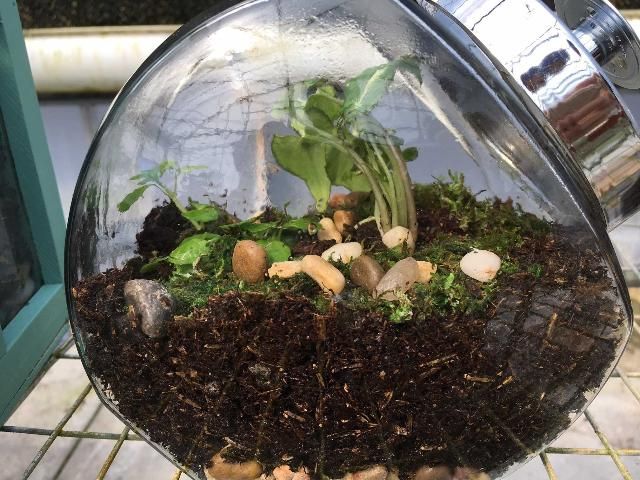
Credit: Amy Vu, UF/IFAS
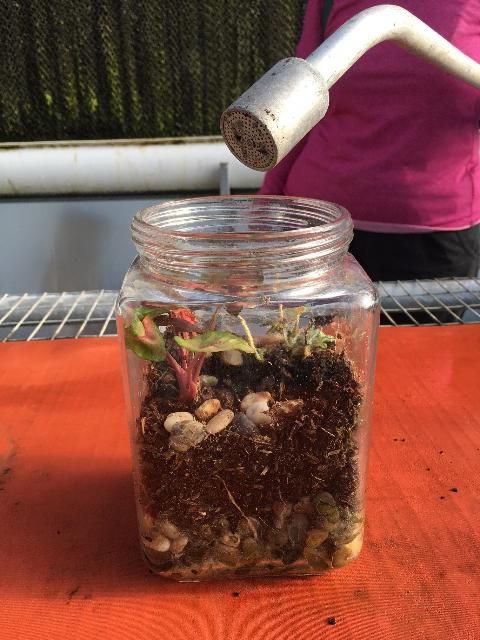
Credit: Amy Vu, UF/IFAS
Cover and place the terrarium where it is exposed to bright indirect light usually in a northeast or north window (Figure 8). Avoid direct sunlight, because it will heat the terrarium and burn the plants. If water condenses and fogs the sides of the container, remove the lid until all condensation evaporates, then replace the lid.
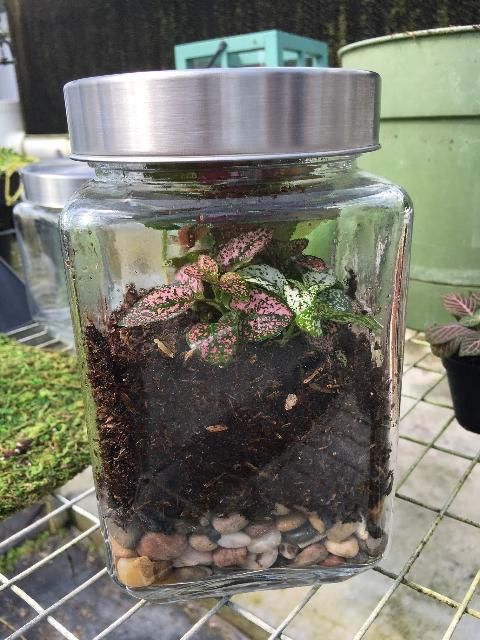
Credit: Credit: Amy Vu, UF/IFAS
Terrariums should only be watered when the soil is almost dry. Since the container has no drainage, add only enough water to moisten the soil. Too much water will rot the plant roots.
You can use a water-soluble houseplant fertilizer (mixed at ¼ the recommended rate) if your plants begin to yellow, but add fertilizer sparingly. You don't want the plants to outgrow the container, and overfertilizing will burn and/or kill them.
Definition of Terms
Condensation—the change of water from its gaseous form (water vapor) into liquid water.
Contours—Furrows or ridges on the soil surface.
Foliage plants—Plants grown primarily for the beauty of their leaves and stems. Foliage plants are typically tropical plants that are susceptible to cold injury, so they are usually grown indoors.
Indirect light—Light that is reflected from one surface to another.
Porous—Having pores or small holes that allow liquid to pass through.
Sterilized soil—Soil that has been heated to kill diseases.
Acknowledgements
Original version: Kathleen C. Ruppert, former assistant professor; Robert J. Black, retired associate professor emeritus; Department of Environmental Horticulture; UF/IFAS Extension, Gainesville, FL 32611.